There exists an obscure family of cheeses which involve fermentations that occur in the abscence of oxygen. Referred to as anaerobic cheeses, they often involve old school techniques for preserving cheese by covering it with oil, packing in jars, burying in the ground, or sealing inside pottery. These fermentations don’t always occur when anaerobic conditions exist; feta kept below a brine or a cheddar that is vacuum sealed shortly after being made don’t seem to involve them. They seem to happen when a cheese is allowed to sit after being salted, and some yeasts start to grow. It’s still unclear to me exactly how it works, but it must involve yeasts starting to flourish, then being cut off from oxygen, with particular cascades of flavor development happening that contribute the flavor profile of the style. It likely involves alcohol, and maybe carbon dioxide built up. What I know is that I have never appreaciated the flavors that emerge from these processes. Never, until now.
The flavors of anaerobic cheeses can move beyond sharp and bitter into spicy and mouthnumbing. They can temporarily obliterate your palate. This is especially pronounced when hard alcohol is incorporated with cheese before being packed in a vessel, such as a cheese called bruss I had in Piedmont Italy that I compare to the sulfurous pits of hell. There are other similar satanic spreads made by taking cheese past its prime, mashing it with strong booze and milk or cream, and leaving it sealed in a jar for months. Examples include Tupí from Catalonia, or the basque Gazta Zaharra. Bold, boozy fruity flavors emerge before the mouth is consumed in fire. After resisting these flavors for years, I’m starting to understand their place, and acquire a taste for them.
Perhaps the most fascinating example is a relic cheese called Formaggio di Fossa. Fossa means pit, hole, or grave. Made in Emilia-Romagna, it involves first burning straw inside a huge, purpose-built stone-lined pit, packing straw along the walls then stacking bags full of cheese on wood boards which line the floor and allow airflow. Once full, the entrance is sealed and the pit is left undistrubed for 80 - 100 days. Carbon dioxide released by the cheese has accumulated inside, as it is heavier than air. Entering the pit could kill you, a candle lowered inside is snuffed out, evidence of the build up of CO2. The heavy gas is pumped out, and the cheese removed to be sold.
When I first tried it, it was fruity, punchy strong, and zealously piquant. I was not equipped with a palate ready to appreciate it. I’ll have to try it again. And again.
Don’t try a cheese once, and then say for the rest of your life that you don’t like it. Try it ten times, from different makers, at different ages. This can be done with any food. Not liking foods is a voluntary act, like being an asshole. You can choose to override your supposedly fixed predilections, and learn to appreciate, to enjoy things you previously did not.
It’s your choice.
You are the most omnivorous animal on the planet.
Maybe start acting like it, and challenge your culturally ingrained norms of what is and is not worth eating.
Or not. I just hope that everyone can know a bit of the extreme joy that reckless omnivorousness has brought into my life. Gastronomic bliss is as fundamental to the human experience as sex and consciousness expanding altered states.
My opinion on these anaerobic cheeses expanded dramatically near the end of my week long cheese road trip with Fausto, of Italian Food Hunters, who organized this tour. He intentionally didn’t tell me much about the cheese called conciata romano, knowing I enjoy the shock of novel, strange, wild cheeses. We drove winding, single lane backroads in the remote hills near Caiazzo, Campania. At the end of the road sits Agritourismo La Campestre, a restaurant that serves lunch on weekends. In the middle of nowhere, surrounded by mixed agricultural lands, it is reservation only, set menu. Manuel Lombardi gave us a tour, taking us to an ancient oak tree that his family calls the heart of the farm. Entering the creamery, Fausto watched as my jaw dropped, eyes widened, heart rate spiked. We were surrounded by milk cans and glass demijohns full of esoteric cheese covered in herbs, submerged in a liquid. It looked an underground cheese laboratory, with some mad scientist running frankensteinesque experiments. Manuel works with sheep milk to make Conciato Romano, a Slow Food presidium cheese that claims to be the oldest in the world. It certainly goes way back, being mentioned by Pliny the elder, and has likely been made in the area since before the Romans took over.
Manuel explains the make process. Sheep milk is coagulated with goat rennet, I assume a lipase rich paste. Tiny wheels are made, which are salted the next day, then dried in a cage for 15 days. The cheeses are washed in the water leftover from cooking a specific fresh pasta called pettole, that leaves a very starchy water behind. This liquid coats the cheese, creating a sticky rind that may absorb flavors more readily and I speculate could help kick start a yeasty rind that will lead to the desired anaerobic fermentations. The cheeses are dried again, then placed inside metal milk cans and glass demijohns, which have replaced the use of pottery amphorae. Olive oil, red wine from Casavecchia grapes, wild thyme, and peperoncino flakes are added, partially covering the cheeses. Every 15 days, the vessel is shaked to mix up the cheeses, evenly coating them in the seasoned oil. Some sit above the oil mixture, some are submerged. It is my feeling that this is leading to a semi-anerobic cheese, that spends some time above the liquid, mellowing the final flavor compared to other anaerobic cheeses that remain fully submerged for the duration of aging, lending a higher dose of things beyond funky. Things feral.
Flavors and aromas armed to the teeth, crashing out the woods as ragtag brigade of once honorable, now forgotten soldiers.
Manuel took us up to the restaurant, where a pottery amphorae sits displayed on a stand. He opened it and used a stick to pierce a cheese, and plated it. It did not look pleasant, and the pungent aroma was a familiar one that I dreaded. Which is why the first nibble was so shocking. It was really good. I took a larger bite. Every flavor that is possible in cheese was rolled into that single bite. There were at least 10 fruits, including blueberry, durian, overripe peaches, figs. An explosive floral character, way too many flowers in one bouquet, almost offensive, as the aroma of jasmine can be for me. Meaty brothy flavors from the fats of sheep milk breaking down. There are multiple levels of spice and burn. A boozy kick and heat like alcohol sits alongside the mustard/wasabi nasal burn of anaerobic fermentations. Another piccante layer is contributed by the lipase from goat rennet, a numbing sichuan pepper sensation on the back of the tongue and into the throat. I may have the sources of these mixed up, it’s hard to tease it all apart. The fascinating part is that in conciata romano all these bold spicy flavors are restrained, and balanced with the other elements.
We talk of a food that hits all regions the tongue, pleases the entire mouth. This did all that, and kept going, its satisfaction spiraling up my jaw bone into my ears, crawling through my skull. I was struck with the realization that this was the most complex cheese I had ever tasted.
The cheese to end all cheeses.
I panicked.
Is this the end of the adventure?
Is this the ultimate cheese I have been searching for?
What will I do now?
Rather than feeling accomplishment, I was melancholic, despondent. What would be the point of going on with all this wandering, struggling up mountains, prying my way into peoples homes and cellars seeking cheeses that alter my consciousness? I was ecstatic and kind of pissed off.
I told Manuel I didn’t know whether to be happy or angry, whether to shake his hand or never speak to him again.
The cheese knocked me off balance, caused me to question the thing I have based my life on. Conciato Romano gave me a mid-life crisis, so I drank my wine, and ate more of it.
I told Manuel I’ll be back someday. He gave us a few of these precious, hard to acquire cheeses for the road. I need to eat at the restaurant, see the cheese made, learn more about its story. Driving away, I was cheese high, dazed, uplifted. I’m not sure the cheese is actually delicious in the normal sense of the word. Many would find it awful. It is a huge, imposing, a a forceful mountain of flavors.
Crafty as a fox, untameable, explosive.
Like fish sauce, most would probably prefer it spread out across a dish, a small dose tempered by mild, creamy things.
Many elements of the cheese line up with themes that have emerged in my travels. It’s no coincidence that this cheese is found at the end of a road, that you could get lost trying to get there. The place is absolutely gorgeous, peaceful. Beautiful cheeses come from beautiful places, that are off the beaten path. It’s no coincidence that it is made by a family who are passionate about farming the land, about growing and serving food they are involved in from the ground up. Shortcuts are not taken, the old recipe is stuck to stubbornly, persistently. There is no need for innovation. This cheese cannot be improved upon.
I slowly got over the shell shock that had caused me to momentarily question the basis of my travels, my writings, my life. I will continue to walk and taste, to tell the stories of the people, places, landscapes, microbes, and livestock who come together in great and rare cheeses. The show must go on. But it’s going to be hard to top this one. The challenge goes out now, find me a cheese that takes me higher, that gets me closer to god, and I’ll jump walls, cross seas, break laws to get a nibble. Come hell or high water, I’ll keep searching for the transcendental cheese at the end of time.
I just hope I never actually find it.

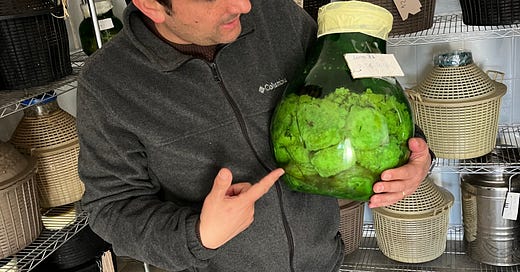



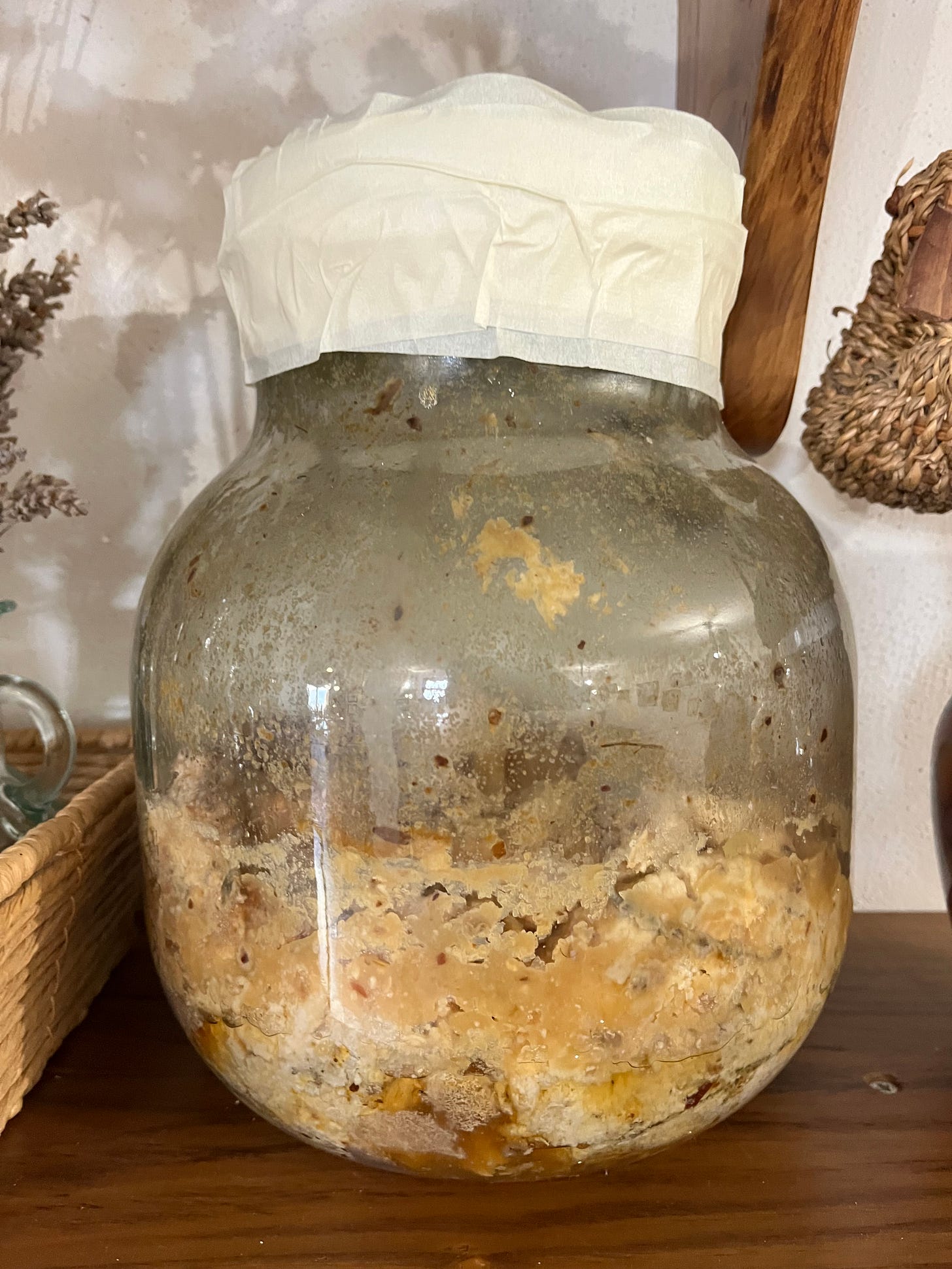

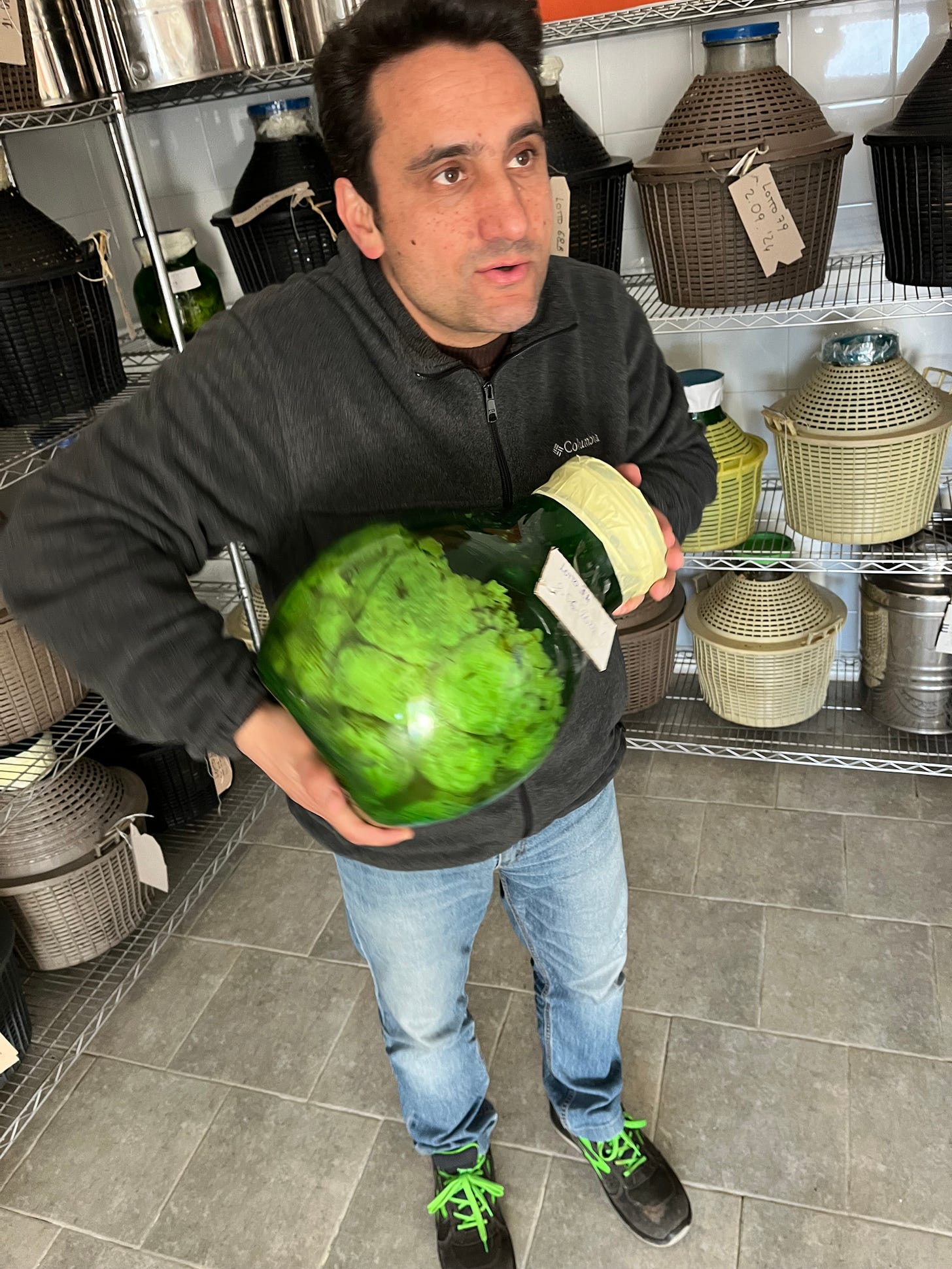
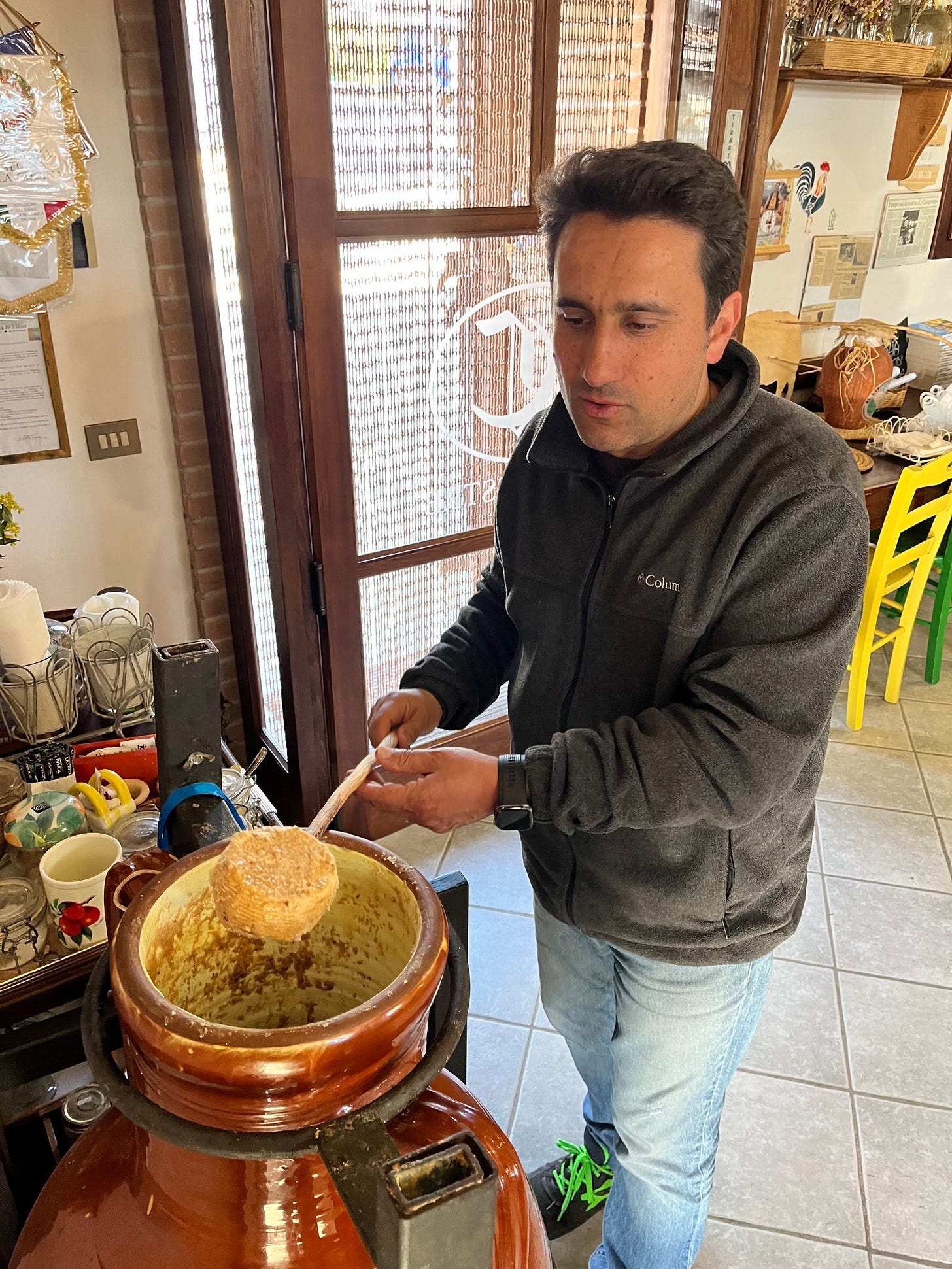
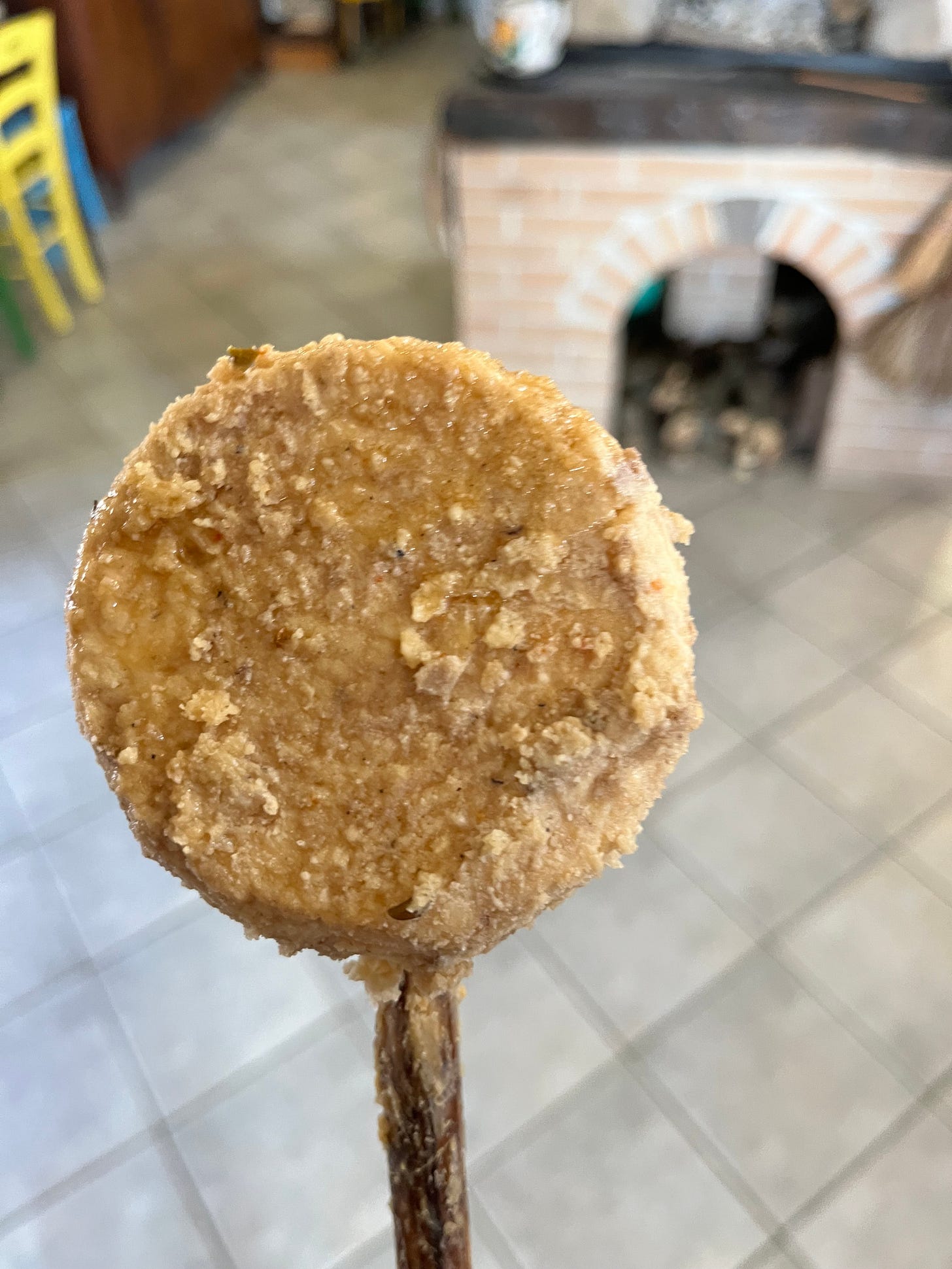
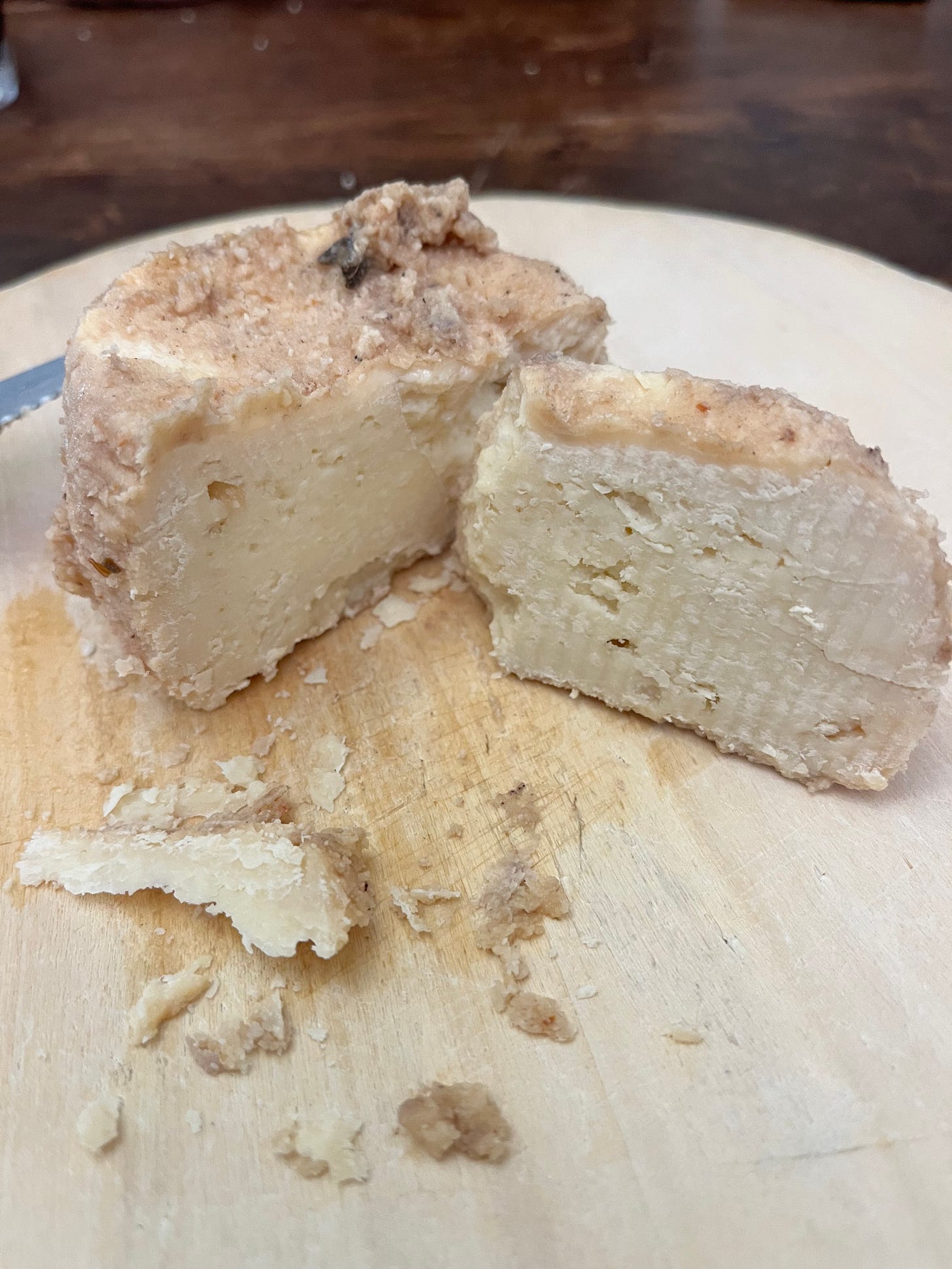
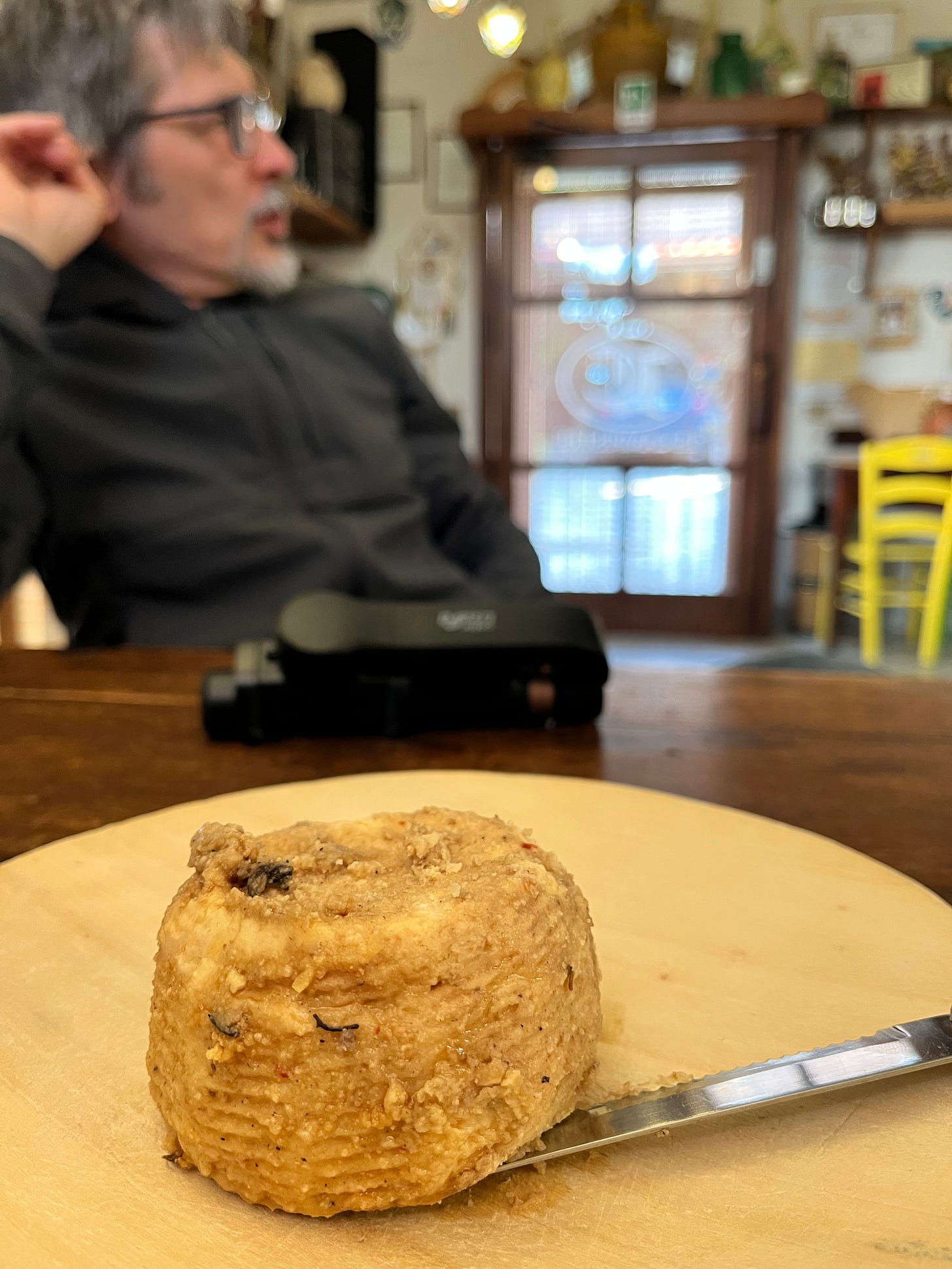
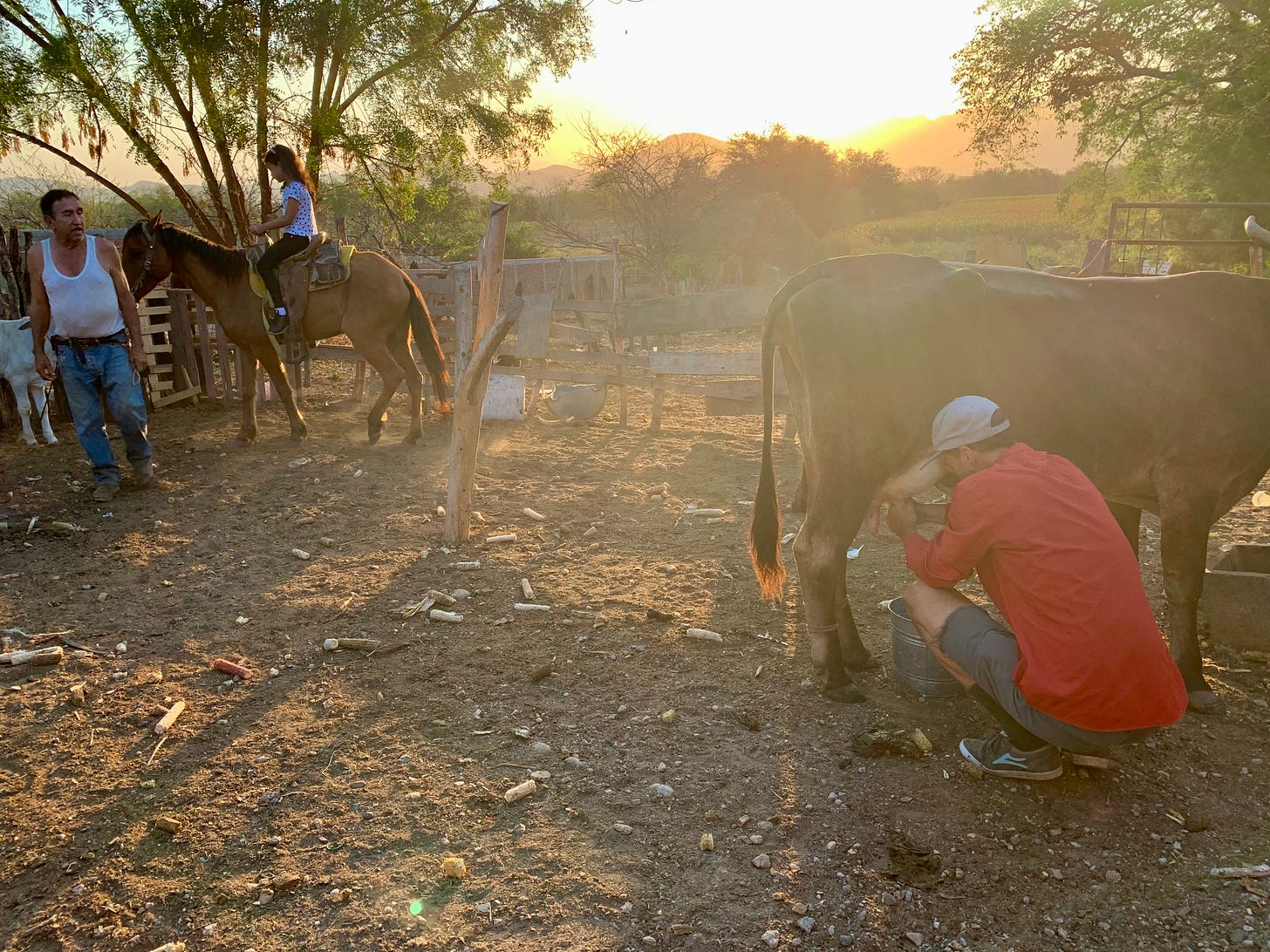
Have you ever tried casu marzu? It is a sardinian pecorino cheese with insect larvae inside. It is delicious, creamy, pungent, and illegal. You might like it!
The Cheese at the End of Time! Can't tell if that sounds like comedy or horror. bit of both, maybe. Here's to the cheese road being long and winding...